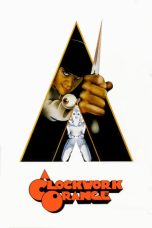- Source: Chemical clock
A chemical clock (or clock reaction) is a complex mixture of reacting chemical compounds in which the onset of an observable property (discoloration or coloration) occurs after a predictable induction time due to the presence of clock species at a detectable amount.
In cases where one of the reagents has a visible color, crossing a concentration threshold can lead to an abrupt color change after a reproducible time lapse.
Types
Clock reactions may be classified into three or four types:
= Substrate-depletive clock reaction
=The simplest clock reaction featuring two reactions:
A → C (rate k1)
B + C → products (rate k2, fast)
When substrate (B) is present, the clock species (C) is quickly consumed in the second reaction. Only when substrate B is all used up or depleted, species C can build up in amount causing the color to change. An example for this clock reaction is the sulfite/iodate reaction or iodine clock reaction, also known as Landolt's reaction.
Sometimes, a clock reaction involves the production of intermediate species in three consecutive reactions.
P + Q → R
R + Q → C
P + C → 2R
Given that Q is in excess, when substrate (P) is depleted, C builds up resulting in the change in color.
= Autocatalysis-driven clock reaction
=The basis of the reaction is similar to substrate-depletive clock reaction, except for the fact that rate k2 is very slow leading to the co-existing of substrates and clock species, so there is no need for substrate to be depleted to observe the change in color. The example for this clock is pentathionate/iodate reaction.
= Pseudoclock behavior
=The reactions in this category behave like a clock reaction, however they are irreproducible, unpredictable and hard to control. Examples are chlorite/thiosulfate and iodide/chlorite reactions.
= Crazy clock reaction
=The reaction is irreproducible in each run due to the initial inhomogeneity of the mixture which result from variation in stirring rate, overall volume as well as geometry of the reactors. Repeating the reaction in the statistically meaningful manners leads to the reproducible cumulative probability distribution curve. The example for this clock is iodate/arsenous acid reaction.
One reaction may fall into more than one classification above depending on the circumstance. For example, iodate−arsenous acid reaction can be substrate-depletive clock reaction, autocatalysis-driven clock reaction and crazy clock reaction.
Examples
One class of example is the iodine clock reactions, in which an iodine species is mixed with redox reagents in the presence of starch. After a delay, a dark blue color suddenly appears due to the formation of a triiodide-starch complex.
Additional reagents can be added to some chemical clocks to build a chemical oscillator. For example, the Briggs–Rauscher reaction is derived from an iodine clock reaction by adding perchloric acid, malonic acid and manganese sulfate.
See also
Circadian clock
Chemical oscillator
References
Kata Kunci Pencarian:
- Bumi
- Austin Abrams
- Sejarah Bumi
- Atom
- Raksa
- Torium
- Radium
- Dinasti Tang
- Ilmu dan teknologi di dinasti Song
- Galium
- Chemical clock
- Iodine clock reaction
- Chemical oscillator
- Circadian clock
- Chemical kinetics
- Bray–Liebhafsky reaction
- Radical clock
- Anatol Zhabotinsky
- Quartz clock
- Optical clock
- 1
- 2
The Secret World of Arrietty (2010)
Dragons Forever (1988)
Parasite (2019)
No More Posts Available.
No more pages to load.














